DAY 3 Demand For Online Shopping

Consumers Are Now Doing Most of Their Shopping Online
For the first time ever, shoppers are going to the web for most of their purchases.
An annual survey by analytics firm comScore (SCOR, +1.02%) and UPS (UPS, +2.84%) found that consumers are now buying more things online than in stores.
The survey, now in its fifth year, polled more than 5,000 consumers who make at least two online purchases in a three-month period. According to results, shoppers now make 51% of their purchases online, compared to 48% in 2015 and 47% in 2014.
About 190 million U.S. consumers—more than half the population—will shop online this year, according to Forrester Research, as reported by the Wall Street Journal.
Why E-Commerce Is Flourishing
Recent headlines that retail sales shrank in June for the second straight month were a grim reminder of how the Great Recession has torpedoed traditional retailers. Thousands of stores closed last year, and chains ranging from Circuit City to Filene's Basement declared bankruptcy. But shopping is flourishing someplace else: the Internet.
Over the last decade, e-commerce sales have grown on average 19% per year, far faster than offline retail. Even during the dark days of 2009 when retail sales shrank 2%, e-commerce vendors grew sales 1.4%, capitalizing on price-sensitive and increasingly Web-savvy consumers to continue to gain market share. So while traditional retailers have been struggling to survive, forward-thinking online merchants Like you and me have unleashed a wave of innovation that is improving the economics of e-commerce.
Online merchants, who emulate their online media counterparts, have gradually recognized the value of search engine optimization to drive free users to their sites through natural search.
Amazon.com and shopping search sites like TheFind.com and Shop Style have led the way. TheFind.com now has 16 million visitors each month, almost entirely from search engine optimization. In an Internet Retailer survey, 73% of e-commerce vendors cited better search engine optimization as a website design priority in 2009.
Many online merchants have injected an additional conversion-boosting element into the Web shopping experience: fun. They have begun to adopt techniques that are tried and true drivers of impulse shopping in the bricks and mortar world: limited time or limited quantity offers (think Home Shopping Network or Kmart's Blue Light Specials), brand or product discovery, and product "story-telling."
Mobile phones
There’s a huge growth in the number of mobile phone usage. And mobile phones have become more and more powerful. With (native) apps, it’s more easy and convenient to shop online. And don’t forget that e-commerce websites are pouring massive resources into optimizing their websites (for mobile). Amazon is losing 1% of their revenue for every 100 ms that their website loads slower And this was in 2008. People have become more and more demanding but also rewarding. If it’s easy to order online,
A lot of companies are improving their web presence and as such conversion rates rise and e-commerce numbers continue to grow.
Cheaper and faster delivery
The biggest factor why people are still shopping “offline” is because they can get it faster. If you get in your car and are able to buy a product you’d have to wait for if you order it online, you’re more inclined to jump in your car. But with same day delivery and cheap (or free) next day delivery, the barriers to ordering online are getting smaller and smaller.
Safety & abundance
A few years back, there were still a lot of worries. Will I get my product on time. Won’t I be scammed? Is this website reliable? But after amazon, online shopping has become easy and a normal part of life. The big companies pave the way for smaller e-commerce companies to follow and hop on the never ending bandwagon of online shopping. There’s an online store for everything these days. People’s behaviors are changing because of it. A couple of years ago our first thought would be: I need to get into town to buy this. Now they go to Google first and see if they can order it online.
The generation that grew up with the Internet is now in its first jobs and has spending power. These individuals are comfortable buying online, but they also have high expectations for a compelling online experience. The good news for e-tailers is that the pillars of a great consumer experience--friend referrals and recommendations, a fun shopping environment and a vibrant community--can also translate into superior customer economics. No wonder e-tailing is flourishing.
country’s who’s spending online statics

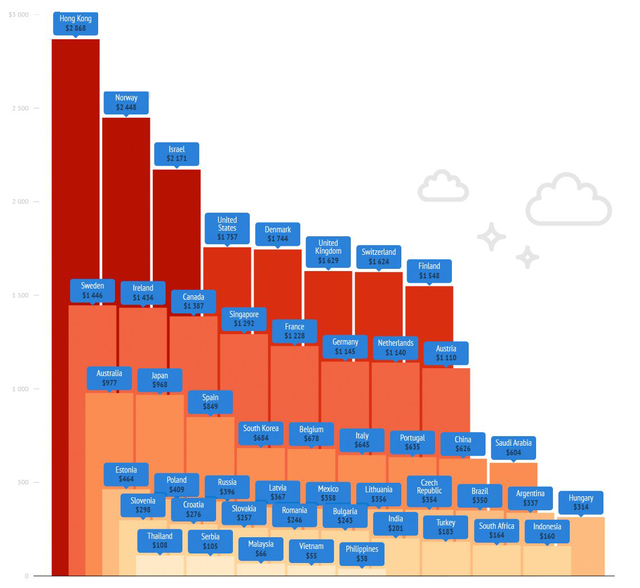
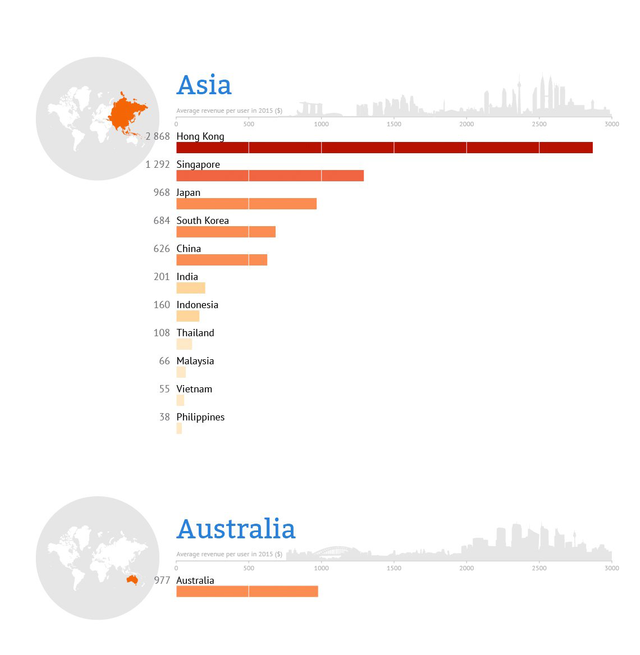

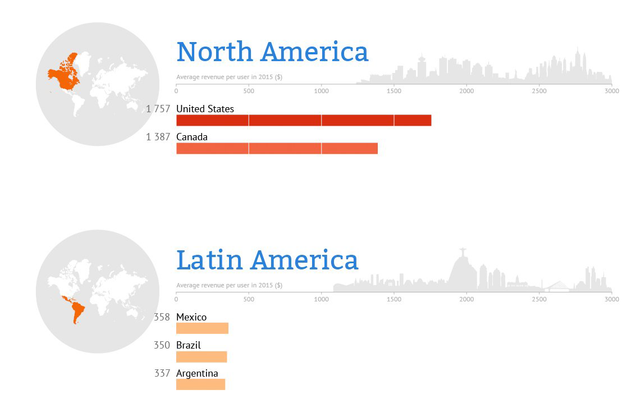
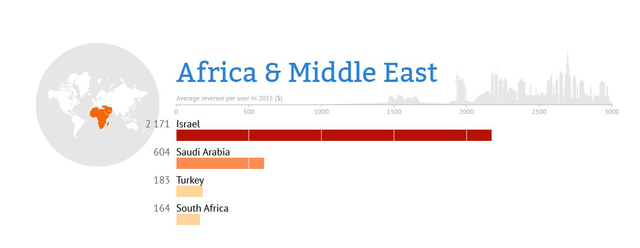
What Is the Future of Ecommerce in 2018 and Beyond?
10 Trends Transforming How Consumers Shop Online
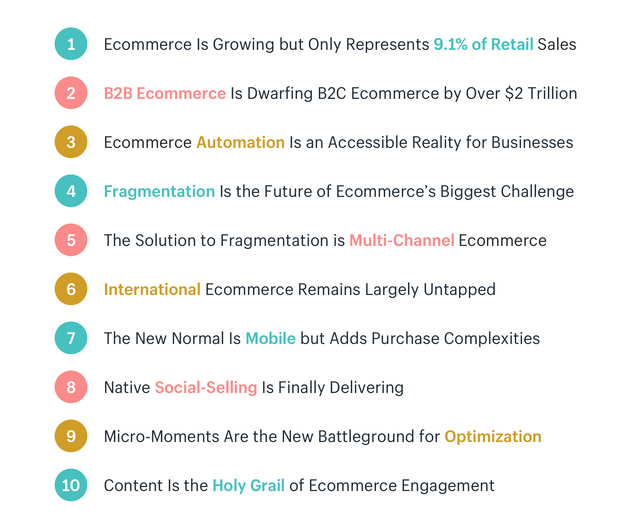
1. E commerce Is Growing but Only Represents 9.1% of Retail Sales
E commerce market share in Q3 2017, as a percentage of all retail sales, has increased to 9.1% according to the U.S. Census Bureau, up from 3.5% just a decade ago.
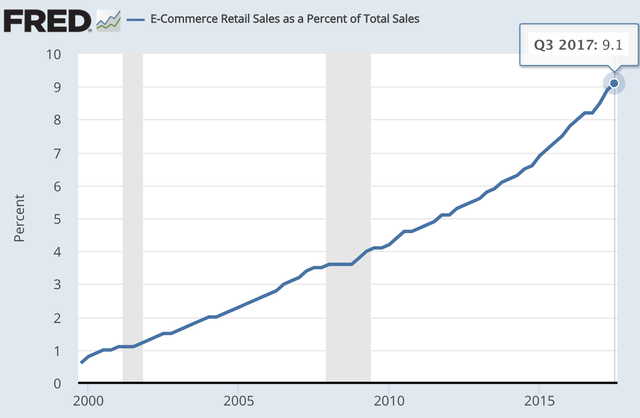
The chart above shows that the growth of ecommerce is almost exponential. The jump in the last half-decade has been from 5.4% to 9.1%.
Fast growth plus low market share means that there is still enormous opportunity for new players to outpace industry leaders.
High-growth businesses need to watch who’s emerging, track who’s loved, and research how to be successful in both business and life. To capitalize on this trend in particular, companies must also focus on optimizing their in-store experiences in conjunction with their eCommerce expressions.
2. B2B E commerce Is Dwarfing B2C E commerce by Over $2 Trillion
If you haven’t invested in an ecommerce wholesale channel yet, you’ve probably at least considered it.
After all, the numbers for B2B ecommerce speak for themselves. In 2017, according to Statista, “the gross merchandise volume of business-to-business e-commerce transactions is projected to amount to 7.66 trillion U.S. dollars, up from 5.83 trillion U.S. dollars in 2013.”
That difference in growth almost matches the entire amount of projected transactions in B2C ecommerce, at $2.143 trillion in 2017.
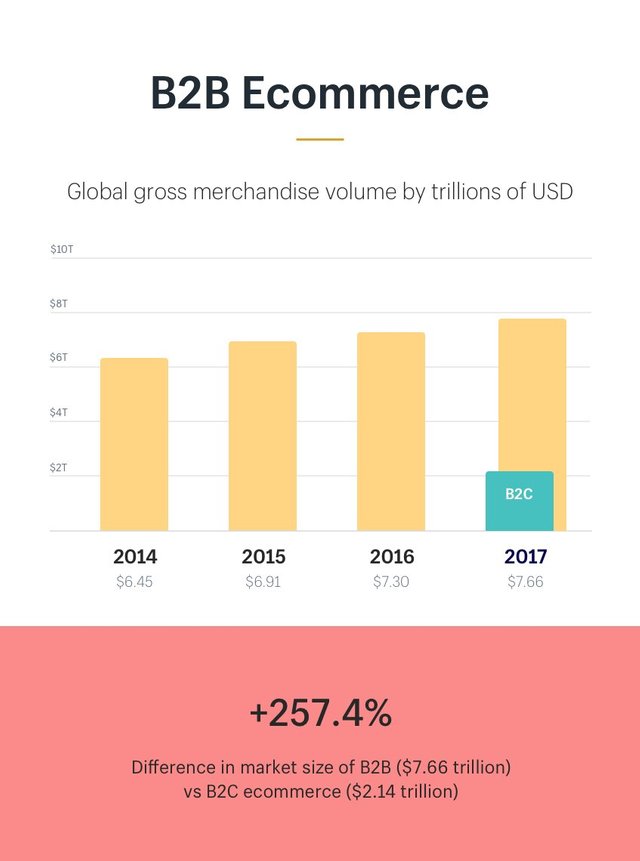
In addition, the average conversion rate of B2B survey respondents was 10% — over three times higher than the 3% average reported by B2C ecommerce executives.
Naturally, the opportunity comes with its own challenges. Every B2B ecommerce buyer is also likely a B2C ecommerce shopper. Having shopped at Amazon, they’ll also be conditioned to want a similar experience — fast, direct, streamlined operations with no resistance between search and checkout. They want to buy at the website, not through a sales rep.
3. E commerce Automation Is an Accessible Reality for Businesses
If your business had a secret to save time, lower costs, and sell more, would you tell anyone?
A decade ago, that secret was marketing automation. Enterprises like Amazon, Walmart, and Costco — with the resources for large-scale research and development — built empires on its back.
Today, a new secret for the future of eCommerce is emerging: automation.
Not surprisingly, entrepreneurs at the forefront are staying tight-lipped. In fact, search data from Google Trends displays just how lean the chatter is:

The reasons for this silence lay on two fronts. To start, no ecommerce platform has offered comprehensive automation as an accessible feature. Companies that are automating have either created their own in-house processes — at great financial cost — or cobbled together mix-and-match workarounds with third-party applications.
No platform, until now But Shopify Plus make automation simple.

Three tools are unleashing ecommerce automation at Shopify Plus.
(1) Shopify Flow
Shopify Flow is a three-step visual builder that enables you to automate any customer-facing or back-office process you can think of. By specifying triggers, conditions, and actions, you can create your own processes or — even simpler — download and install a growing number of ready-made workflows, all without any coding.
(2) Launchpad
Launchpad is a command center for major commerce events: like flash sales, product releases, and special celebrations. Schedule everything on your to-do list long before big days arrive and take the guesswork and heavy-lifting out of driving revenue to your store.
(3) Shopify Scripts
Shopify Scripts lets you add automatic discounts, relevant payment options, and specialized shipping options to create a customized checkout experience for each customer. Scripts offers fine-grain control over your customer’s cart and is an exercise in optimizing closest to the money.
Together, Shopify Flow, Launchpad, and Shopify Scripts make saving time, lowering costs, and selling more with automation not only possible but easy.
4. Fragmentation Is the Future of E commerce's Biggest Challenge
Thanks to the accessibility of digital, consumers have access to more buying opportunities than ever before. Our phones give us immediate access to more retailers than we can count.
For big-ticket items, in particular, this means an exponential increase in a word I’m loathed to mention: touch points.
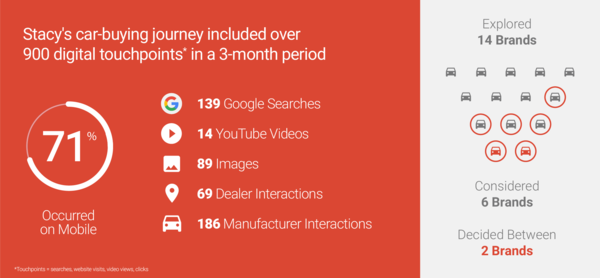
While lower-cost products rarely take three months of research, nearly all online buyers now follow a similar, meandering path.
If you’re a large company, you may be scared because niche boutiques are well-positioned to gain market share. If you’re a small company, you may be excited about the lower barriers to market entry and growth.
No matter where you sit on the fence between startup and dominant industry player, there’s an opportunity to win and an opportunity to lose.
5. Multi-Channel E commerce Is the Solution to Fragmentation
Now a day’s there is a word every smart and established ecommerice business person use “touch point.”.
It is a perfect word because it so aptly describes any individual person’s convoluted journey to purchase.
It might start on a Pinterest feed, or when someone sees their friend’s jacket. It might end after a search at the store, or at a buy button through Facebook. Most people (86%) shop around on at least two touchpoints (i.e., channels).
The good news is shoppers that do this tend to spend more. Javelin Strategy predicts that mobile commerce, accounting for $161 billion at the end of 2016, is set to jump to $319 billion by 2020.
“Multi-channel management is the art and science behind decoding the subtle nuances of who, what, where, when and why people are buying from you on each individual channel you sell your products on.
“It’s about creating balance, and understanding when and where to amplify and show restraint throughout your channel mix, so you won’t overwhelm your following or burn your marketing dollars trying to convert people when they’re not interested.
“It’s about finding opportunities in your data, and implementing creative or budget changes to capitalize when the opportunity arises.”
Yet even though this discipline sounds simple enough, it brings its own challenges.
Managing multiple channels can be confusing unless it’s all consolidated into one system. That doesn’t come easy … nearly a third of retailers lack “the inventory visibility across stores, vendors, and warehouses in order to accurately promise multi-channel fulfillment.”
Attempting multi-channel without properly setting up and maintaining your inventory management system is futile. And no strategy is worth anything if you can’t measure results — so you’ll need multi-channel attribution.
If you’re looking to survive — and thrive — in the future of ecommerce, you’ll need to build your store on infrastructure that can manage and maintain multichannel retailing with minimal manual input from you.
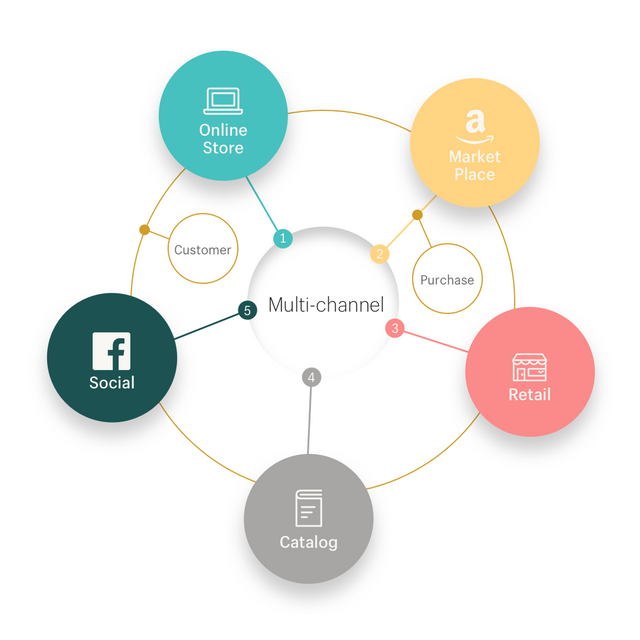
6. International E commerce Remains Largely Untapped
According to McKinsey, 1.4 billion people will join the global middle class by 2020, and 85% will be in the Asia Pacific region. CPG and retailers who enter this space early will have a competitive advantage in meeting market demand.
The William Wrigley Jr. Company, a popular chewing gum producer, for instance, has already achieved 40% market share in China. In fact, ecommerce as a whole has likewise shifted away from the West:
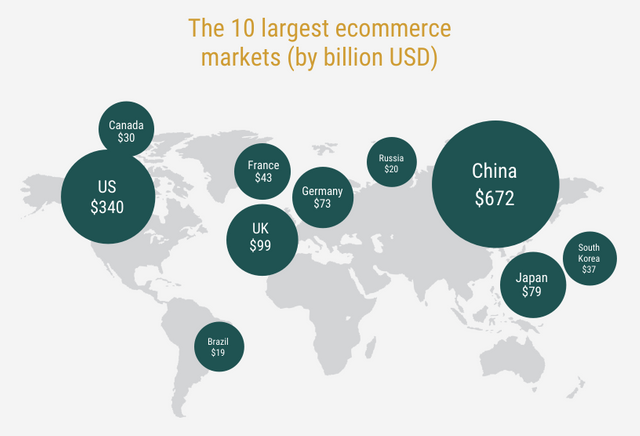
7. Mobile Is the New Normal but Adds Purchase Complexities
In the last year, you’ve probably seen your mobile traffic outpace, or at least come close to, your desktop traffic levels. Just this Black Friday and Cyber Monday, Shopify saw mobile sales account for 59.6% of orders overall and 64% of Black Friday sales in particular, an increase of 10% year-over-year.
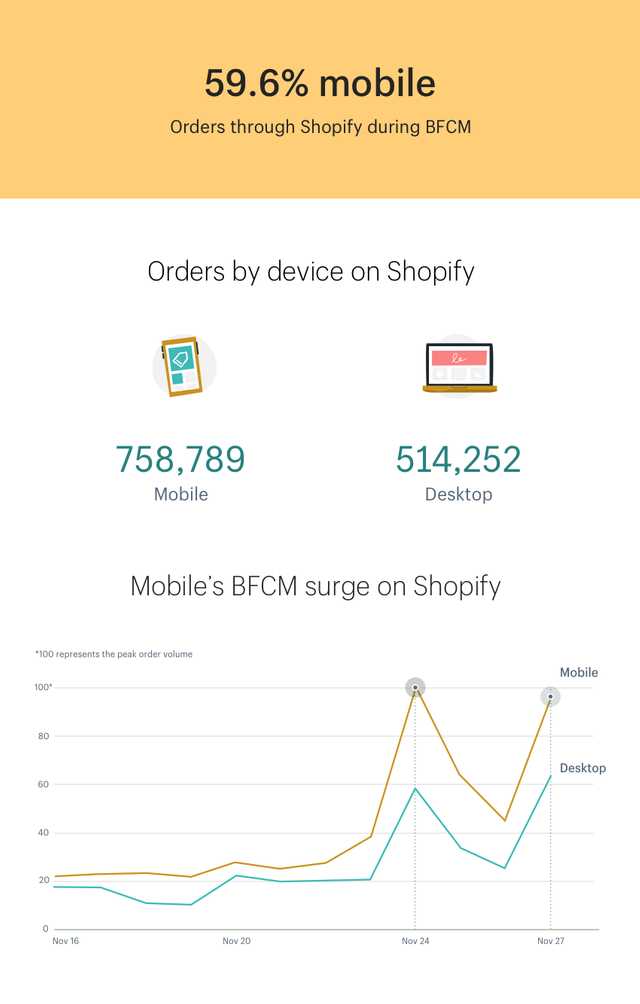
Interestingly, according to data from Adobe, while 46% of all BFCM traffic came through mobile devices, only 30% of sales closed there.
What accounts for Shopify merchants beating the average ecommerce mobile conversion rate by over double?
Part of the answer lies in Shopify’s mobile-first approach to site design and templates: meaning all Shopify stores are built for mobile from the ground up.
Of course, today, most sites are responsive and mobile friendly in their design … that’s why what makes Shopify merchants uniquely positioned for the future of ecommerce & approach to mobile first payments.
Take something like Shopify Pay. During BFCM, over 400,000 people spent over $30 million 3x faster using Shopify Pay.
8. Native Social-Selling Is Finally Delivering
despite the experimental nature of selling directly on social media, the results are in …
Instagram have over a billion monthly active users.
According to Flurry, the average digital adult spends 5 hours per day on their devices and “50% of time-spent is in social, messaging, media and entertainment applications.”
A good slice of them are buying — 18.2% of respondents to this September 2016 survey have purchased products directly via social media. Even more will buy in the coming years, as these early adopters vet and validate the experience.
MVMT Watches has already succeeded with social selling, directly generating $15,000 in revenue with 1,500 people visiting their Facebook shop in a week.
9. Micro-Moments Are the New Battleground for Optimization
Marketing is becoming more granular. One-size-fits-all advertising messages are already obsolete in ecommerce, and now, companies’ competitive advantages are coming from optimizing micro-moments.
What are micro-moments? According to Think with Google, these include:
In-the-moment purchase decisions
Decisions to solve problems right away
The pursuit of big goals during downtime
Decisions to try new things in routine moments
Now more than ever before, shoppers can make more out of their brain breaks and downtime. In addition to creating content, promotional offers, and targeted ads on social media, ecommerce marketers should optimize every last detail—including transactional emails like shipping notifications, purchase confirmations, and status updates.
Triggered by buying behaviors, these messages can help generate repeat sales and deepen customer engagement. According to research from Experian, the revenue per email from transactional messages dwarf bulk emails. Open and transaction rates for messages are also higher since shoppers want to know when their orders will arrive.
You can add the following types of optimizations to your transactional emails:
Cross-sells based on seasonality and purchase
How-to videos and buying guides
Links to your mobile app
Exclusive offers
10. Content Is the Holy Grail of E commerce Engagement
Great content is educational, helpful, and entertaining. As a marketing strategy, it’s also cost-effective and impactful to ROI. That’s why 78% of CMOssee custom content as the future of marketing. Not to mention, brands that rely on content save over $14 on each new customer acquired.
In theory, content is something that companies can create as soon as tomorrow. It takes minimal resources to launch a blog or create a product guide. But you need to be thoughtful and strategic about your approach: consumer attention spans are spread thin, and audiences have high-quality standards for what they’re reading, watching, and interacting with.
A good strategy pays off:
Interesting content is one of the main reasons why people follow brands on social media, according to Demand Metric.
64% of people say that customer experience is more important than price point in their choice of a brand, says Gartner.
Marketers who prioritize blogging are 13x more likely to generate a positive ROI, says HubSpot.
Content can help double website conversion rates from 6% to 12%, says HubSpot.
As powerful as content is, it’s also tough to do right.
You want to make sure that your approach is optimized to drive product interest and sales.
Create how-to videos, that show your products in action.
Curate and collect user-generated content,
Answer FAQs in your YouTube channel
Create photo-heavy content to spark engagement on Facebook, Twitter, Pinterest, and Instagram.
Fill your blog posts with beautiful images of people using your products.
Become your own media outlet